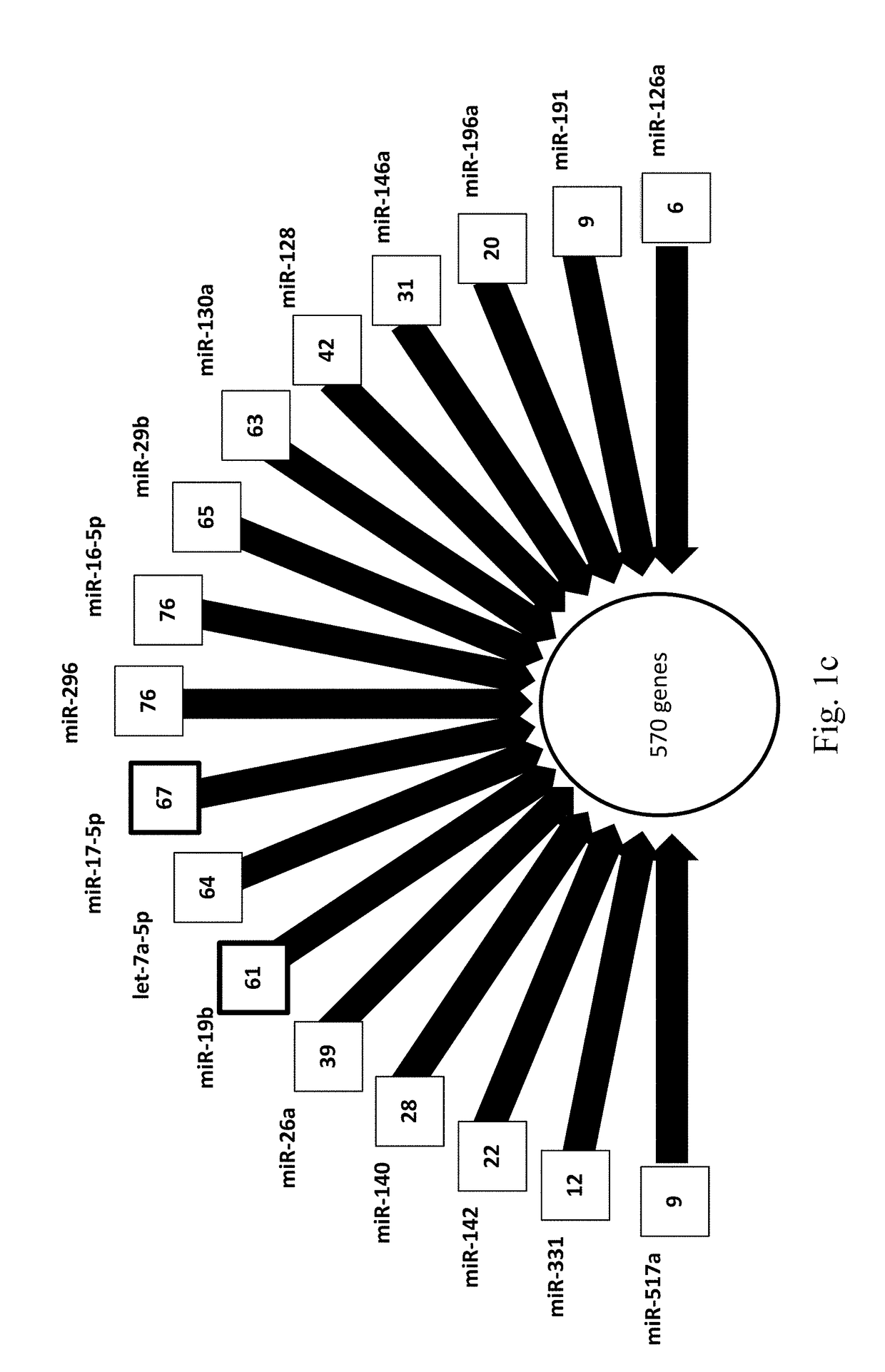First trimester epigenetic and microrna biomarkers for preeclampsia
a microrna and epigenetic technology, applied in the field of preeclampsia first trimester epigenetic and microrna biomarkers, can solve the problems of lack of sensitivity and specificity, and increase the risk of chronic diseases in the later years of mother and child
- Summary
- Abstract
- Description
- Claims
- Application Information
AI Technical Summary
Benefits of technology
Problems solved by technology
Method used
Image
Examples
example 1
of Samples to Determine miRNA Biomarkers of PE
[0166]First trimester blood samples and uterine artery Doppler ultrasonography were obtained from 1007 women between 11 and 13 6 / 7 weeks of gestation. Epigenetic and miRNA profiling was performed on the serum or buffy coat samples from total of 51 controls and 17 severe PE cases. Cases and controls were closely matched with respect to age, sex, body mass index (BMI) and other relevant parameters (Table 3).
[0167]To compare PE women with controls, 381 miRNAs in 28 patients (C=14, PE=14) were examined. Expression profiles revealed 22 significantly upregulated miRNAs which are shown to be involved in reproductive system disease (p<0.02) (FIGS. 1a, 1b, 1c, Table 4). Out of these 22 miRNAs, namely, 7c, 93, 128a, 140-3p, 142-3p, 146b, 15a, 196b, 331-5p, 886-5p) are identified as novel biomarkers of PE.
[0168]Upregulation of certain miRNAs, namely, 17, 26a, 130b, 7a, 29a, 517a, 191 & 296 in the third trimester in the serum or in the placenta is r...
example 2
of Samples to Determine Post-Translational Modifications of Histones as Biomarkers of PE
[0170]Post-translationally modified (PTM) histones in buffy coat samples were characterized using reverse-phase liquid chromatography mass spectrometry. The profiles showed several species that corresponded in mass to core and linker histones variants and their PTM isoforms (data not shown, Su et al. (2007)). Multiple PTMs were measured; however, the core histones (H3, H2A, H2B) showed complicated spectra due to the presence of multiple variants and a high degree of PTMs, in particular acetylation and methylation. ELISA study showed no changes in H2A in PE serum. Histone H4 showed unique spectra as H4 does not have sequence variants (uncomplicated by multiple variants, unlike other histones).
[0171]In H4 spectra, the most abundant species was observed at 11,306 Da which correspond in mass with dimethylation (DiMe) and N-terminal acetylation (N—Ac) of H4 (Su et al. (2007)). The next most abundant p...
example 3
of Samples to Determine Histone or DNA Modifying Enzymes as Biomarkers of PE
[0174]The expression levels of 81 epigenetic genes which are involved in histone modifications and DNA methylation was measured. Two of the eleven HDACs were significantly altered with no changes in HAT expression (p<0.05) (FIG. 2b). Even though increased HDAC1 did not correspond with hyperacetylation, this may reflect specific actions of individual HD ACs. The decrease in HDAC5 has been shown to increase H4 acetylation in an unrelated study. This corresponds well to PE patients' hyperacetylated histone H4 profile. Thus, modulation of HDAC or histone acetylation levels may represent an underlying cause / consequence of cytokine dysregulation in PE.
[0175]In addition to the HDACs, aurora kinase A (AURKA), aurora kinase C (AURKC), and protein arginine methyltransferase 8 (PRMT8) were significantly altered (p<0.05).
PUM
| Property | Measurement | Unit |
|---|---|---|
| mass | aaaaa | aaaaa |
| mass | aaaaa | aaaaa |
| peptide mass mapping | aaaaa | aaaaa |
Abstract
Description
Claims
Application Information
 Login to View More
Login to View More - R&D
- Intellectual Property
- Life Sciences
- Materials
- Tech Scout
- Unparalleled Data Quality
- Higher Quality Content
- 60% Fewer Hallucinations
Browse by: Latest US Patents, China's latest patents, Technical Efficacy Thesaurus, Application Domain, Technology Topic, Popular Technical Reports.
© 2025 PatSnap. All rights reserved.Legal|Privacy policy|Modern Slavery Act Transparency Statement|Sitemap|About US| Contact US: help@patsnap.com



